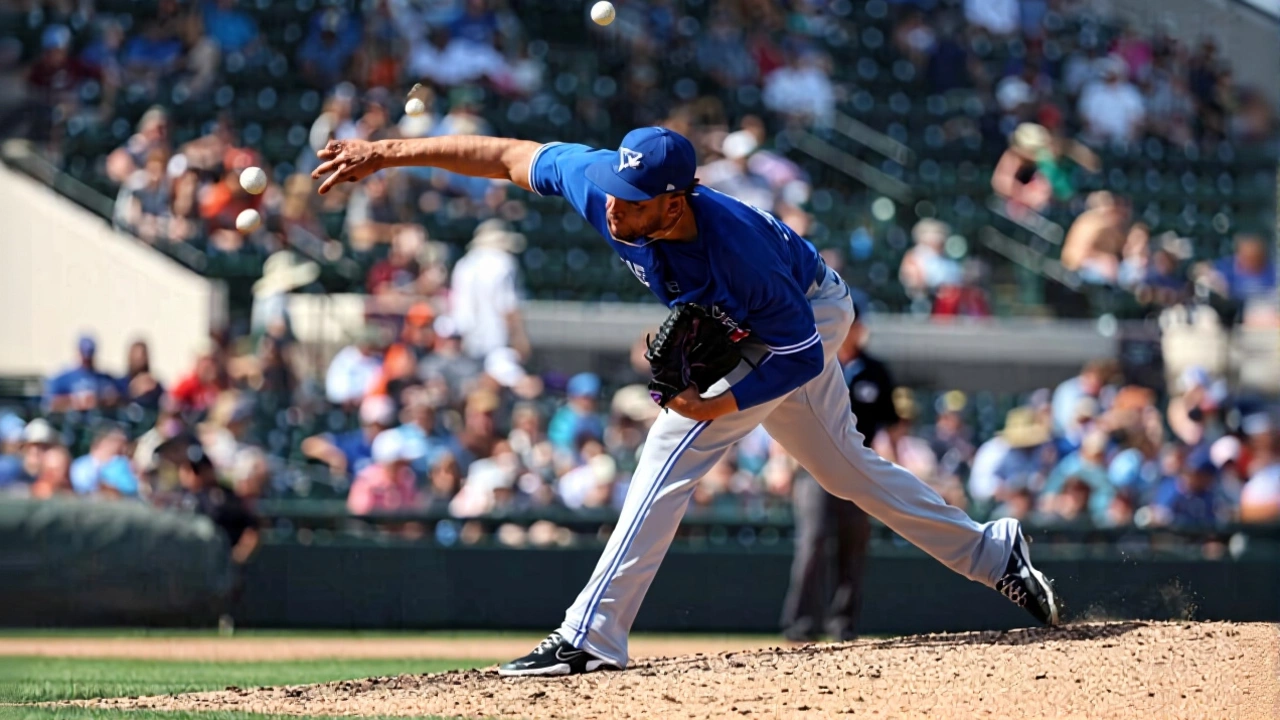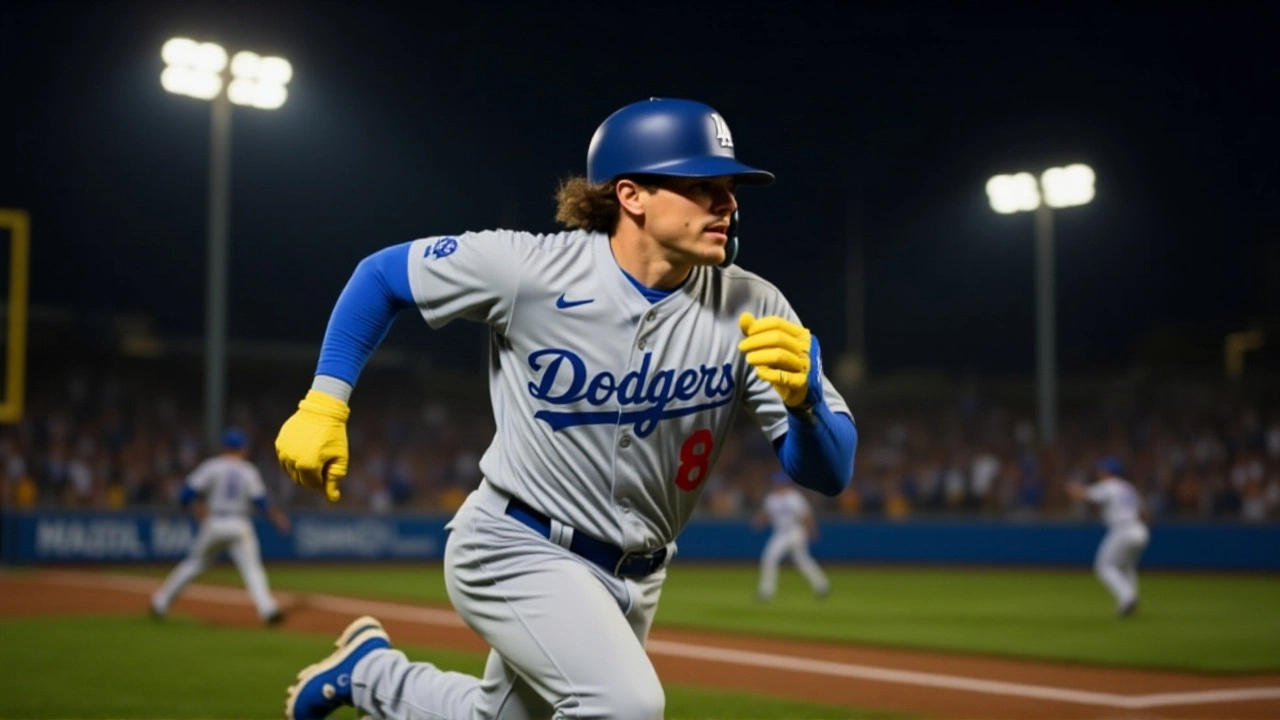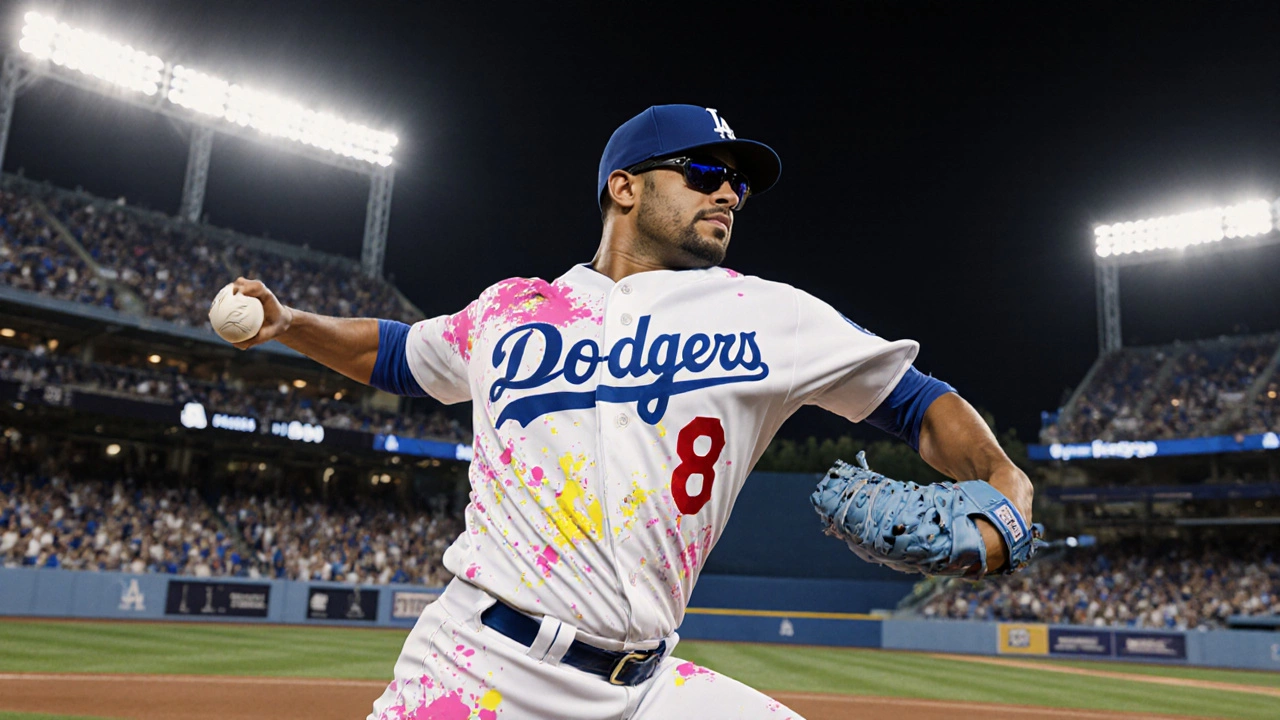When Los Angeles Dodgers deployed utility player Enrique J. Hernández to pitch in Game 4 of the 2025 World Series on Tuesday, October 28, 2025, at Dodger Stadium in Los Angeles, they didn’t just risk losing the game—they ignited a firestorm in baseball’s most respected circles. Former San Diego Padres closer and Hall of Famer Trevor Hoffman didn’t hold back. "As someone who dedicated his entire career to pitching, I find it disrespectful to the craft," Hoffman said on MLB Network the next day. The move, made with the Dodgers trailing the Toronto Blue Jays 2-1 in the series, wasn’t just unusual—it was a stark departure from baseball’s unwritten code. The decision came after the Dodgers’ bullpen had been stretched thin over the previous three games. Manager Dave Roberts explained it as a strategic necessity: "Kiké’s familiarity with our catchers and his ability to eat innings in a lopsided situation was the best move for our long-term success." But that logic rang hollow to veterans like Hoffman, who spent 18 seasons mastering the art of closing out games. Hernández, primarily an infielder and outfielder, had pitched in just 15 total MLB appearances across the 2025 season—with a combined 13.45 ERA and a WHIP of 3.13. His fastball averaged 82.3 mph during the outing, a stark contrast to the 93.2 mph heaters he faced as a hitter. What made it worse? Hernández wasn’t just bad on the mound—he was historically bad. His 12.60 ERA in the regular season and 15.19 in the postseason weren’t flukes. He gave up 17 hits in 10 innings, walked 27 batters, and struck out just 2. By comparison, the average MLB reliever in 2025 posted a 3.81 ERA. Hoffman noted that even rookie pitchers in Triple-A typically throw 88 mph or higher. "This isn’t a novelty act," Hoffman said. "This is the World Series. People are watching. And it sends the wrong message to every kid who’s ever thrown a curveball in Little League." Yet, baseball’s rules allow this. MLB’s regulations permit position players to pitch in games with an 8-run or greater lead or deficit after the 7th inning. But Game 4 wasn’t a blowout. The Dodgers were down 5-3 in the 8th. Hernández entered with two outs and a runner on second. He got the final out—on a weak groundball—but surrendered a double to the next batter in the 9th before being pulled. The Blue Jays went on to win 7-4, taking a commanding 3-1 series lead. Then came the twist. On Wednesday, October 29, 2025, in Game 5, Hernández—back in his natural role—crushed a solo home run off Blue Jays ace Alek Manoah. The ball left his bat at 108.3 mph, traveled 406 feet, and landed in the left-field seats. It was his 11th career postseason homer, and it cut the Dodgers’ deficit to 2-1 in the third inning. It was the kind of moment that defines postseason legends. And it came just 24 hours after he’d been lambasted for pitching. "I’m proud to be the Dodgers’ record holder for most postseason games played," Hernández told SportsNet LA before Game 5, referencing his 87th appearance, which broke the previous franchise mark. That number—87—isn’t just a stat. It’s proof of durability, adaptability, and resilience. He’s been with the Dodgers in three separate stints since 2015, a rarity in today’s transaction-heavy MLB. He’s the ultimate bench weapon: a switch-hitter, capable of playing five positions, and a clutch performer when the lights are brightest. But that doesn’t excuse the pitching decision. And it doesn’t make Hoffman’s criticism any less valid. This isn’t about whether Hernández can pitch—it’s about whether a team should. The Dodgers’ front office, led by president of baseball operations Andrew Friedman, has long been praised for data-driven decisions. But this one felt like a spreadsheet ignoring the soul of the game. The backlash wasn’t limited to analysts. Former players flooded social media. "I’ve seen guys pitch in blowouts," said former All-Star David Ortiz in a tweet. "But not in a World Series game where the score is 5-3. That’s not strategy. That’s surrender." The Dodgers lost Game 5, 5-3, and now face elimination in Game 6 on Friday, October 31, 2025, at Rogers Centre in Toronto. Their bullpen remains depleted. Their rotation is exhausted. And their reputation? Damaged. This isn’t the first time a team has pushed the envelope. In 2018, Boston Red Sox used Andrew Benintendi as a pitcher in a 15-run blowout. In 2022, the San Francisco Giants had Mike Yastrzemski throw two innings in a 12-run game. But those were clear mop-up situations. This wasn’t. It was a desperate gamble in the most visible stage of baseball. The real question now isn’t whether Hernández will pitch again. It’s whether the Dodgers will ever be able to fully recover their credibility with purists.
Why This Matters Beyond the Box Score
Baseball thrives on tradition. Pitchers train for a decade to master one skill. Hitters spend years refining their swing. When a team casually uses a position player to pitch in the World Series, it blurs the line between innovation and disrespect. Fans aren’t just upset about the loss—they’re upset about the message it sends. To young players. To pitchers. To the integrity of the game. The Dodgers aren’t the first team to bend the rules. But they’re the first to do it in the World Series with such a glaring mismatch in skill level. Hoffman’s critique isn’t about one player. It’s about the sanctity of specialization.What’s Next for the Dodgers?
With a 3-2 series deficit, the Dodgers must win Game 6 in Toronto—or their season ends. Their bullpen has thrown 34 innings over the last four games. Starter Tyler Glasnow is on short rest. Their best reliever, Yency Almonte, has pitched in three straight games. The odds are stacked. And now, every decision will be scrutinized—not just for its tactical merit, but for its symbolic weight. Will Roberts turn to Hernández again? Probably not as a pitcher. But if the game is tied in the 9th, and he’s due up with runners on? Don’t be surprised if he’s sent in to pinch-hit. That’s the kind of move that wins games—and restores respect.
Behind the Numbers: Hernández’s Unlikely Legacy
Hernández’s 87 postseason games are more than a record. They’re a testament to adaptability. Drafted by the Astros in 2009, he was traded to the Red Sox in 2015, then to the Dodgers in 2018. He was released in 2021, signed back by LA in 2022, and re-signed again in 2025 after a brief stint with the Twins. He’s played 12 different positions in his career. He’s a utility player in the purest sense: not a star, but indispensable. His home run in Game 5 wasn’t just a swing. It was a statement: "I may not be a pitcher. But I’m still here. And I’m still dangerous."What the Data Shows
- Hernández’s 13.45 combined ERA in 2025 (regular + postseason) is the highest ever for a player with 10+ innings pitched in a single season since 1990.
- His 82.3 mph average fastball in Game 4 was the slowest recorded pitch by a position player in World Series history.
- He’s the only player in MLB history with 85+ postseason games and fewer than 5 innings pitched.
- His 406-foot home run in Game 5 was the longest by a Dodgers player in the 2025 postseason.

What’s Next for Hernández?
He’s a free agent after the World Series. With his record-setting postseason resume, he’ll get offers. But will teams want him as a pitcher? Unlikely. As a hitter? Absolutely. His value isn’t in his arm—it’s in his bat, his glove, and his head. He’s the ultimate bench player: a guy who shows up, does his job, and never complains. Maybe that’s the real story here. Not the pitching. Not the criticism. But the fact that, despite everything, he still found a way to shine.Frequently Asked Questions
Why did the Dodgers use Kiké Hernández as a pitcher in Game 4?
With their bullpen exhausted after three grueling games and trailing 2-1 in the series, the Dodgers turned to Hernández in the 8th inning of Game 4 to eat innings in a lopsided situation. Manager Dave Roberts cited Hernández’s familiarity with catchers and his ability to handle pressure, though the move was widely seen as a last-resort tactic rather than a strategic advantage.
Is it legal for a position player to pitch in the World Series?
Yes. MLB rules allow position players to pitch in games with an 8-run or greater margin after the 7th inning. However, Game 4 of the 2025 World Series had a 2-run deficit, making the move technically legal but widely considered a violation of baseball’s unwritten norms and a poor use of resources in a high-stakes situation.
How did Trevor Hoffman react to Hernández’s pitching appearance?
Trevor Hoffman, a Hall of Fame reliever with 601 career saves, called the decision "disrespectful to the craft of pitching" during his MLB Network analysis. He highlighted Hernández’s 12.60 ERA and 82.3 mph fastball average, contrasting it with the elite velocity of professional pitchers and stressing the years of training position players ignore when used in such roles.
Did Hernández’s pitching hurt the Dodgers’ chances?
While Hernández got the final out in the 8th inning of Game 4, he surrendered a double in the 9th before being pulled, contributing to a 7-4 loss. More importantly, the move drained the Dodgers’ remaining bullpen depth and drew intense criticism that distracted from their focus. The team lost Game 5 as well, now facing elimination in Game 6.
What’s the significance of Hernández’s 87 postseason games?
Hernández holds the Los Angeles Dodgers franchise record for most postseason games played (87), surpassing previous record-holder Russell Martin. This reflects his durability, versatility, and value as a clutch performer over multiple stints with the team since 2015—despite never being a full-time starter.
Will Hernández pitch again in the 2025 World Series?
It’s extremely unlikely. The backlash from Hoffman, fans, and former players has been overwhelming, and the Dodgers’ remaining roster options—though thin—are far more suitable than using a position player again. Even if the game becomes a blowout, the optics would be disastrous. The team will almost certainly turn to their last available relievers instead.
